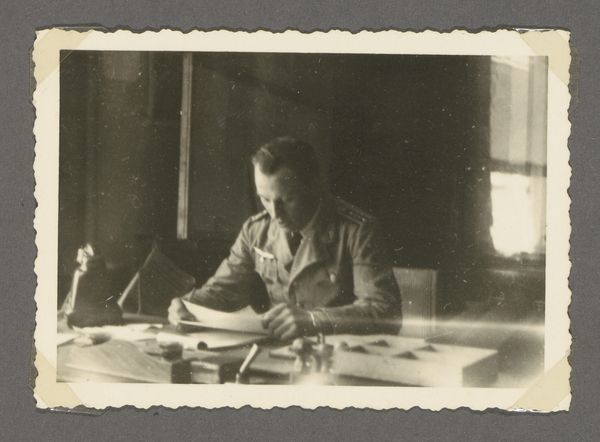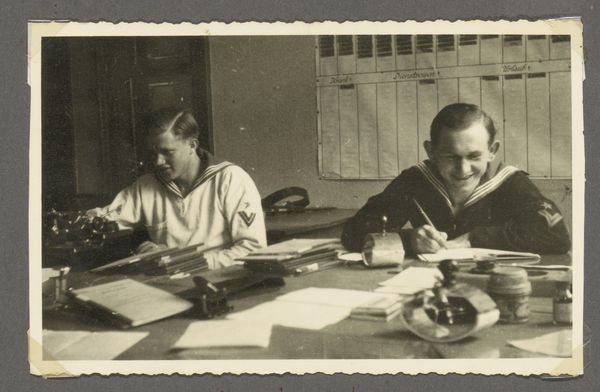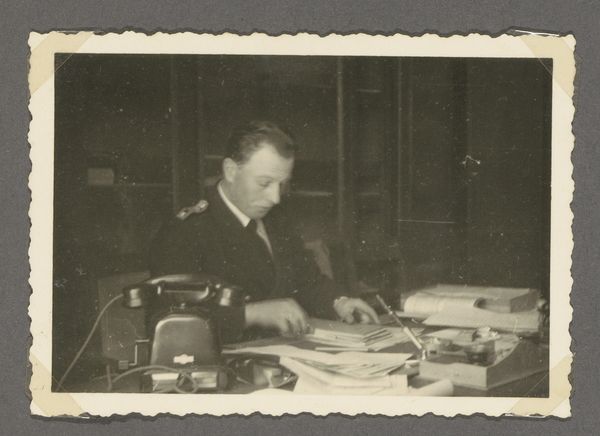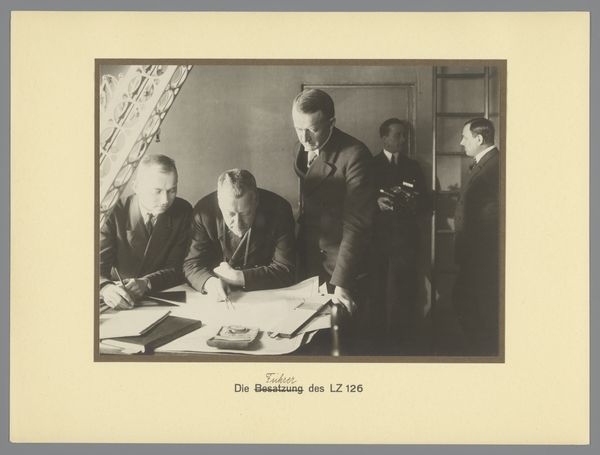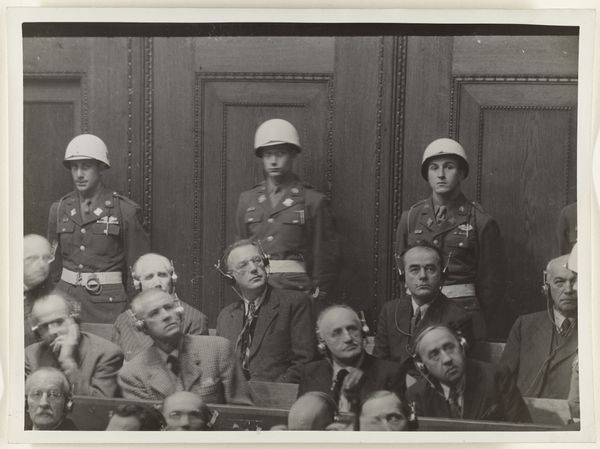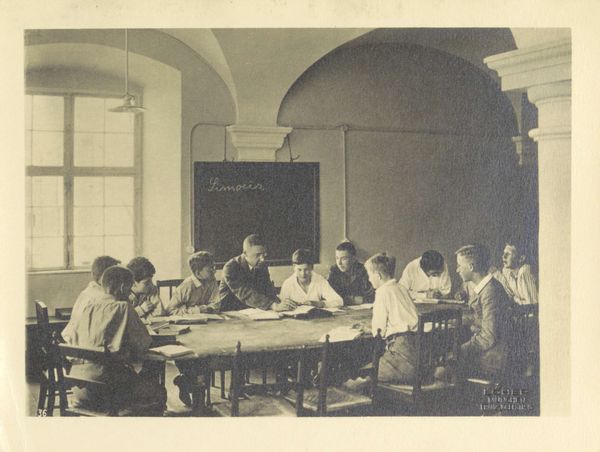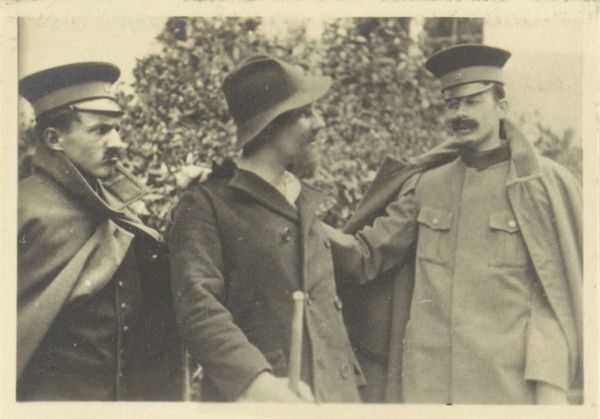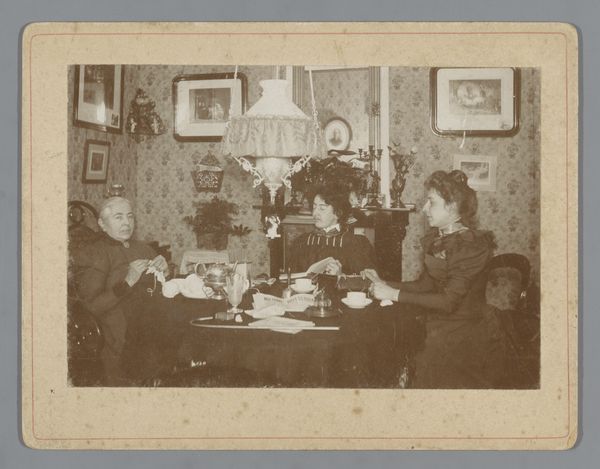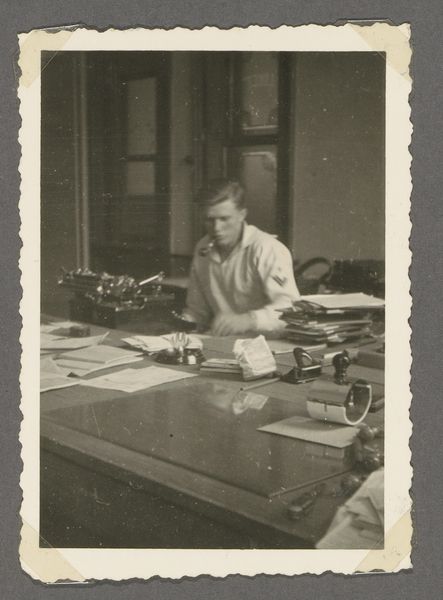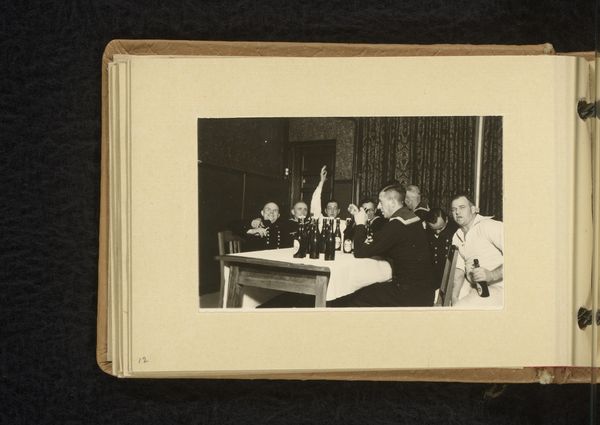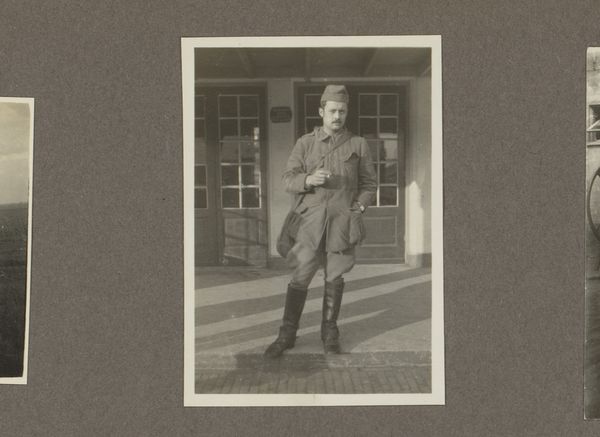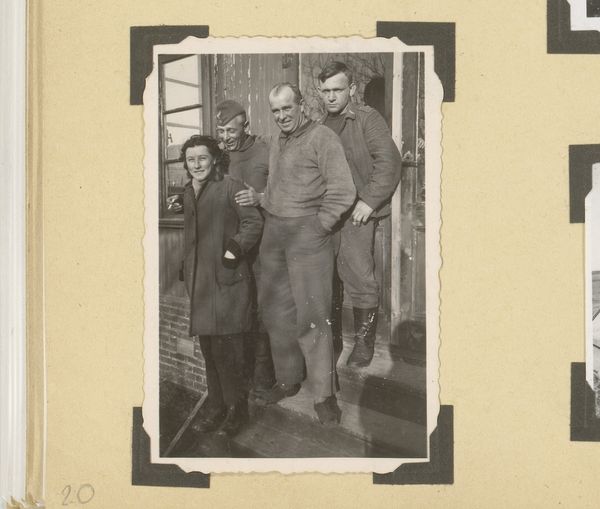
photography, gelatin-silver-print
#
portrait
#
photography
#
group-portraits
#
gelatin-silver-print
#
genre-painting
#
history-painting
#
realism
Dimensions: height 62 mm, width 87 mm
Copyright: Rijks Museum: Open Domain
Curator: This gelatin silver print, simply titled "Drie militairen," or "Three Soldiers," originates from sometime between 1941 and 1945, during a tumultuous period in world history. Editor: The graininess, the way the light catches on the uniforms... there’s something unsettling about it. It feels almost like a captured moment rather than a staged portrait. Curator: It is likely that the photographer remains anonymous to this day, as this candid realism could be deemed problematic during the wartime era. The central figure, seemingly an officer given the wings insignia, is seated at a desk, engrossed in papers. Two younger sailors stand behind him. The photograph as an artifact is rather telling. Editor: What’s interesting to me is the contrast between the officer and the sailors. He looks burdened, weighed down, but they appear more apprehensive. Are they comrades? Subordinates? The image hints at hierarchy, but their expressions resist simple categorizations. I find the contrast to be disturbing, with a lack of shared identity between the foreground and the background. Curator: This image really speaks to the pervasive use of portraiture and group portraits to portray a nation in its strength. Despite its anonymous creation, this work reminds us how imagery plays a vital role in conveying complex narratives about conflict, power dynamics, and individual roles within larger sociopolitical landscapes, even if unintentionally. Editor: Absolutely. Even in its anonymity, it asks us to consider who is absent. Whose stories aren’t being told within official narratives of wartime heroism and duty? We can learn a lot about identity, politics, gender, race, and class, and how these issues intersect when images, as is the case with this photograph, act as documentary records that act in the social field. Curator: And while the lack of specific details about the photograph's origin limits concrete conclusions, this ambiguity paradoxically encourages more open discussions and invites diverse perspectives that intersect through identity, politics, history, and collective experiences. Editor: A small photograph with very large implications, then. One can certainly reflect about the political weight that even seemingly simple photographs such as this can embody, acting to engage new audiences through open debate and thought-provoking experiences.
Comments
No comments
Be the first to comment and join the conversation on the ultimate creative platform.
